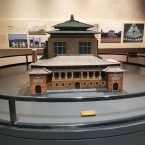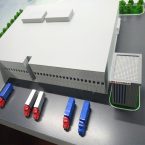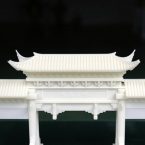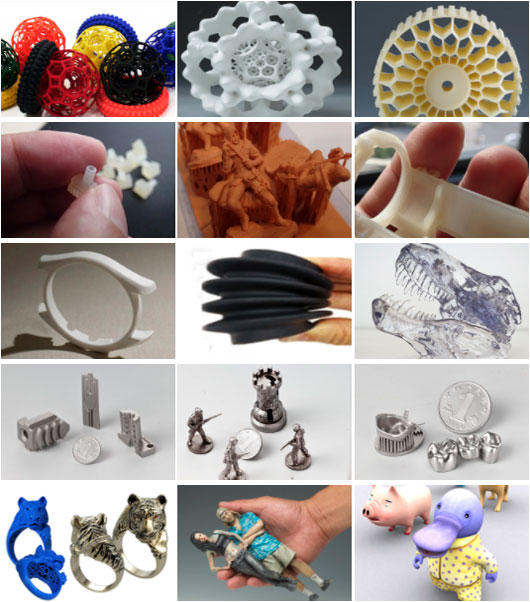Guide
- How to Calculate 3D Printing Price (SLS, SLA, SLM, MJF, FDM, ETC.,)
- Anodizing vs. Painting: An In-depth Analysis
- 9 Types of 3D Printed Metal Copper Techniques
- 3D Printing Materials and How to Choose the Right One?
- What Is Micro Manufacturing Technology
- Wire 3D Printing: Process, Filament, Printer and Features
- Uncover The Mystery Of CNC Machining
- Huazhong University of Science and Technology has made new breakthroughs in ultrafast laser 3D printing of fine and complex semiconductor micro-nano structures
- In 2025, there will be more than 600 metal 3D printing equipment serving China’s aerospace and other fields
- Looking at the development trend of 3D printing from Formnext 2021
- 3D printed prototype silica gel molds, realizing small batch production of industrial products
- Global architectural 3D printing inventory, no need to move bricks to build a house
- The latest application cases of 3D printing in aviation
- 3D printing everything? Japanese media: Printable buildings, parts, organs and even food…
- 3D printing provides emergency production of anti-epidemic products, global anti-epidemic
Case Studies

3D Printing Construction Model
With the increasing improvement of 3D printing technology, not only can small items be printed, but this technology can even completely subvert the traditional construction industry.
3D Printing In Construction Field
With the improvement of 3D printing technology, more and more objects can be completed by 3D printing. As of January 2013, these 3D printed products are small objects. However, the potential of 3D printing is far more than just producing DIY household items. In fact, this technology can even completely subvert the traditional construction industry.
3D printing technology appeared in the mid-1990s and is actually a technology that uses light curing and paper lamination to achieve rapid prototyping. Its working principle is basically the same as that of ordinary printers. The printer is equipped with adhesive materials such as powdered metal or plastic. After it is connected to the computer, the blueprint on the computer is finally turned into a real object through a multi-layer printing method.
Large items such as bicycle frames, car steering wheels, and even aircraft parts require larger printers and more storage space. This technology is now used in many fields, and people use it to make clothing, Construction, automobiles, and so on.
Table of Contents
Why Choose PTJ Construction 3D Printing Service
PTJ meets or exceeds the quality standards of the world’s most demanding industries with our state of the art equipment and quality standards. Our precision and productivity is made possible by our ultimate success factor: the presence of skillful, knowledgeable PTJ experts in construction 3d printing and more additive manufacturing parts.
- No minimum order quantity
- Metal or plastic 3D printed prototype and production parts in 7-10 days
- Precision custom 3D printing parts at affordable prices
- Online free quote in the shortest time
- Single prototypes or complex shapes are both allowed
- A wide selection of metal or plastic materials
- Commercial and industrial-grade 3D printers
- Cooperative supplier assistance project
- Provide a quick solution for small batches of complex prototypes
- Provide a quick solution for small batches of complex prototypes
- We provide with our partner
- 3D printing services for metals and plastics
- Meet the rapid needs of complex prototype designers
The Application Of 3D Printing Technology In The Construction Industry
Compared with traditional buildings, 3D printing construction technology has advantages not only in its speed-it can be several to several tens of times faster than traditional construction technology; it does not require the use of templates, which can greatly save costs, and it is low-carbon, green and environmentally friendly. specialty;
It does not require a large number of construction workers, which greatly improves production efficiency; it can easily print out high-cost curved buildings that are difficult to build in other ways; it can print out higher strength and lighter concrete buildings;
It may also change the development direction of the construction industry and adopt more prefabricated buildings.
Whether architects, engineers or builders use 3D printers to assist them in the entire process from conceptual design to construction.
Whether it is a physical model printed directly from CAD or BIM data, to the iterative production of specific parts in design research, 3D printers are the fastest and most cost-effective way to produce pure white and high-definition color complex geometric models.
- • Physical models during concept development
- • 3D printed models directly from CAD and BIM data
- • Models can be produced quickly and inexpensively
- • Design and research of key components
- • Manufacturing complex surfaces and geometric shapes
- • Targeting high-resolution specific parts and surfaces Exchange of opinions on decorative effects
- • High-resolution color display model
- • Combine the model with other elements to achieve the desired effect
- • Make multiple copies easily, quickly and cheaply

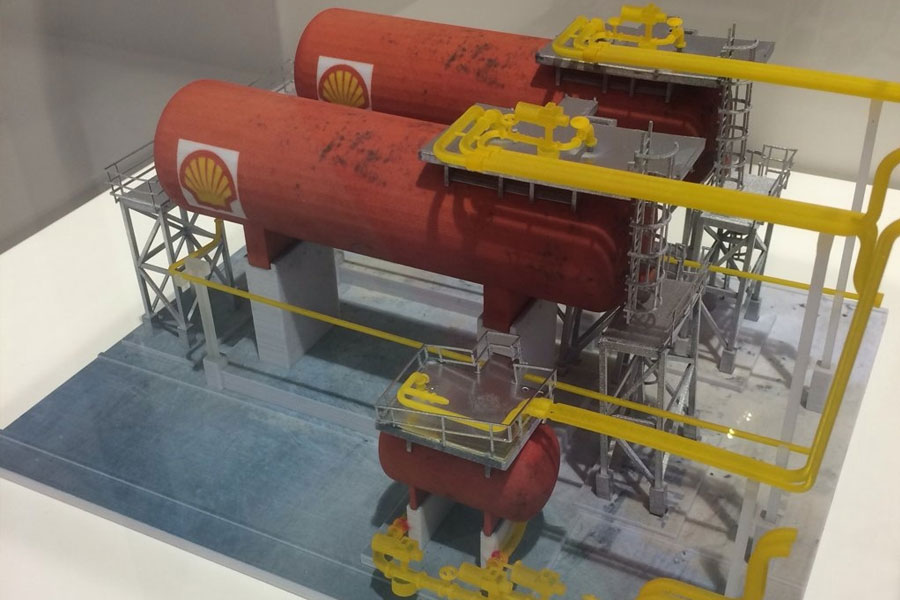
The Application Of 3D Scanning Technology In The Construction Field
The 3D scanner makes 3D measurement technology widely used in research and education, and opens the door to innovation.
So far, it is mainly used in the construction field:
- • 3D optical measurement teaching and training tools (design, analysis, testing and metrology applications)
- • 3D scanning (color or non-color) for 3D art work
- • Document post-processing, size scaling or rapid prototyping of artistic work
- • 3D data archiving (virtual combination, etc.)
- • Enlarge/reduce building model through 3D scanned data
- • 3D data archiving of building models
- • Renovate existing buildings according to their original appearance
- • Building damage assessment
Construction Model 3D Printing Services & Additive Manufacturing Building Parts Manufacturer - Custom Architecture Model
The Architectural Sand Table Model expresses the architectural art in the form of miniature entities, faithfully expressing the structure of architectural ideas, and transforming the architect’s intention into a concrete image. 3D printing architectural models are fast, low-cost, environmentally friendly, and at the same time exquisitely produced, saving a lot of materials, which has been accepted by more and more people in the industry.
The architectural model is very important so that the client can visualize the full version of the proposed project. However, the process of making traditional building models is very laborious and labor-intensive. It is particularly difficult, time-consuming and expensive to accurately reproduce the reduced details. As a result, very important small details are often discarded, but the distinction between special design and the customer’s decision-making process will often cause a negative impact. High detail is very important to users. Keeping these details and losing these details is a world of difference for customers.
Using 3D rapid prototyping can reduce the manpower and time required, create detailed and accurate scale models, and effectively convey the unique concept of each design to the client. They are able to replicate fine-scale design elements very accurately in a short period of time, and the production cost is only a small part of the cost of the hand-built model. Made of sturdy and durable materials, the model can be as thin as 0.6mm and with intricate details, it is unexpectedly strong.

The Prepare Of Construction Model 3D Printing
3D Printing Building Model Materials
The materials used for building model mainly include polylactic acid (PLA), ABS resin, light-curing photosensitive resin and thermoplastic (PA nylon powder), etc. The 3D printing technologies used are FDM fuse manufacturing technology, SLA Light curing rapid prototyping technology and SLS selective laser sintering technology.
There Are Three Main Categories Of Architectural Model 3D Modeling Software
- ① Conventional animation production software Maya, 3DMax, Rhino;
- ②Building Information Modeling (BIM) modeling software Revit, Archi CAD, Bentley;
- ③Basic drawing software Auto CAD. There is also an open source 3D drawing software SketchUp which is also very suitable for architectural model design.
The 3D Data Requirements For 3D Printing Construction Models
Before completing the modeling work and outputting the building model, it is necessary to perform detailed component size adjustment, model splitting and model assembly design on the model according to the performance of the 3D printer equipment and the selected printing materials to ensure that the final use requirements are realized. Due to different 3D printing molding technologies and 3D printing materials, there are minimum wall thickness requirements and later powder cleaning or support removal requirements. If the wall thickness is too small, the components are easily damaged during the powder cleaning process.
The development of 3D printing technology is very rapid. 3D printing architectural models are fast, low-cost, environmentally friendly, and beautifully produced, which has great advantages. Welcome to consult!
- - Facade model adjustment. Sometimes the final model to be printed exceeds the one-time molding size of the 3D printer, and the model is required to reflect the architectural details. If the model print size is too small, it will be difficult for many detailed lines to show the effect. For later use, the model needs to be split. The final model printing effect is achieved in the way of block printing and grouping. When splitting, try to choose the part with vertical or horizontal lines on the facade, so that the joint joints in the later stage will not affect the overall effect of the model. In order to reduce the amount of materials used for printing the building facade model, the thickness of the outer wall is generally thinner. Considering the model splicing and preventing deformation, a certain strength connecting member should be designed at the splicing part to ensure the tight assembly and integrity of the model. .
- - Processing of the detailed components of the model. When the architectural model is reduced by tens or even hundreds of miniature models, some details (such as pillars, window frames, strong glass, exposed details such as railings) will become very thin and thin. There is no way to support or clear fans. Therefore, some details of the model should be appropriately enlarged and adjusted according to the minimum wall thickness and diameter requirements. Only then can it meet the requirements of post-printing and powder cleaning.
- - Indoor model adjustment. The adjustment method of the indoor model component size is basically the same as that of the facade model component, and all need to meet the requirement that the calculated size of the component is larger than the minimum wall thickness of the printer after being scaled down. When adjusting the size of indoor walls, it is necessary to take into account the proportional relationship between different walls, and the mutual ratio between the walls should be as close as possible to the real situation. In order to facilitate cleaning or clear support, the vertical and horizontal components should be separated before the indoor model is printed. At the same time, the splicing method between the vertical and horizontal components in the later period should be designed. The connection method of leaving a hole. If the later components need to be colored, they should be divided according to the color block and the coloring operation space.
- - Delete the internal structure of the building model, try to delete irrelevant display parts (such as furniture and some accessories, etc.) without affecting the force, appearance and some details to be displayed. This can save costs and improve the efficiency of 3D printing.
3d-printing-china.com Construction Case Studies
3D Printing Model Of Wuhan University School Gate
Wuhan University School Gate Model Additive manufacturing (3D printing) services for prototypes. Rapid and functional prototypes, workable molds, and ...
Swire Cold Chain Warehouse Model
Cold Chain Logistics generally refers to a systematic project that refrigerated and frozen foods are always in a specified low temperature ...
Stilted Building Model By 3D Printing
Diaojiaolou, also called “Diaolou”, is a traditional residence of the Miao, Buyi, Dong, and Tujia nationalities. There are particularly many stilt ...
3D Printing Wuhan Well-Known Building Hankow Customs House Model
Hankow Customs House, located at the intersection of Yanjiang Avenue and Jianghan Road, Hankou, Wuhan, was designed by the British Capital Sijiusheng ...
3D Printing Stunning Palace Model
The palace is a building where the emperor handles government affairs or banquets and residence. The palace is a place where the emperor dynasty ...
PTJ offers online 3D printing services for china rapid prototyping and production of non-metal and metal 3D printed parts at affordable prices.
- * Supports drawing uploads in file formats “.pdf”, “.jpg”, and “.png”.
- * Supports file uploading and loading of 3D (3D) CAD data “.igs” and “.step”.
- * Supports file uploading of two-dimensional (2D) CAD data “.dxf” and “.dwg”.
- PC
- ST-130
- PA 2200
- CoCrMo
- PA 3200 GF
- ABS M30
- Ceramic
- POM-like
- ULTEMTM 9085
- Paraffin Material
- Polyphenylsulfone
- Polyetheretherketone
- Soft Rubber Material
- Aluminum Filled Nylon
- High Ultra-Fine Plastic
- Mold Steel MS1
- NickelAlloy IN718
- Titanium Alloy Ti64
- White Photosensitive Resin
- Black Photosensitive Resin
- Transparent Photosensitive Resin
- Full Color Photosensitive Resin
- Micro-nano Material
- High Ultra-Fine Plastic
- Full-Color Gypsum Composite Material
GET IN TOUCH OR GET A QUOTE
PTJ 3D Printing
Mobile WhatsApp WeChat:
+86 8288 6112
+86 152 1709 1354
Email: [email protected]
Address: Dongguan City, Guangdong Province, China.
